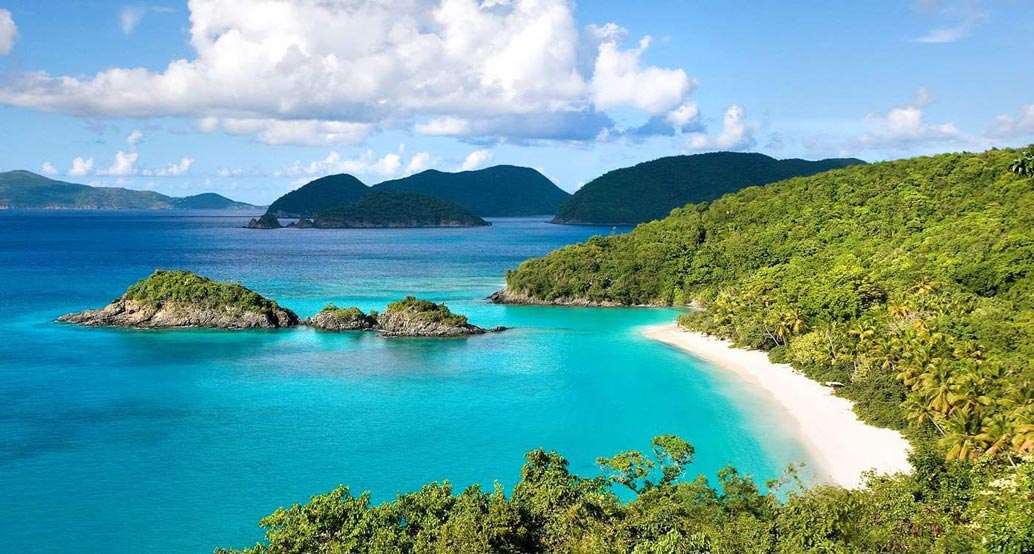
The 18 Most Beautiful Places To Visit In Vietnam
Choosing Vietnam can be overwhelming but worthy, believe us. We are born and raised here and on a mission to show you top spots in:
North Vietnam – Famed for mountains, rice terraces, ethnic minorities, and colorful national costumes.
Central Vietnam – Packed with historic heritage, cultural and natural beauty as well as mouth-watering local dishes, we will introduce it to you all.
South Vietnam – From pristine beaches, recreational activities, museums, to food markets and seafood as fresh as it gets, you can feast your eyes and belly 24/7.
Hanoi – The capital of Vietnam
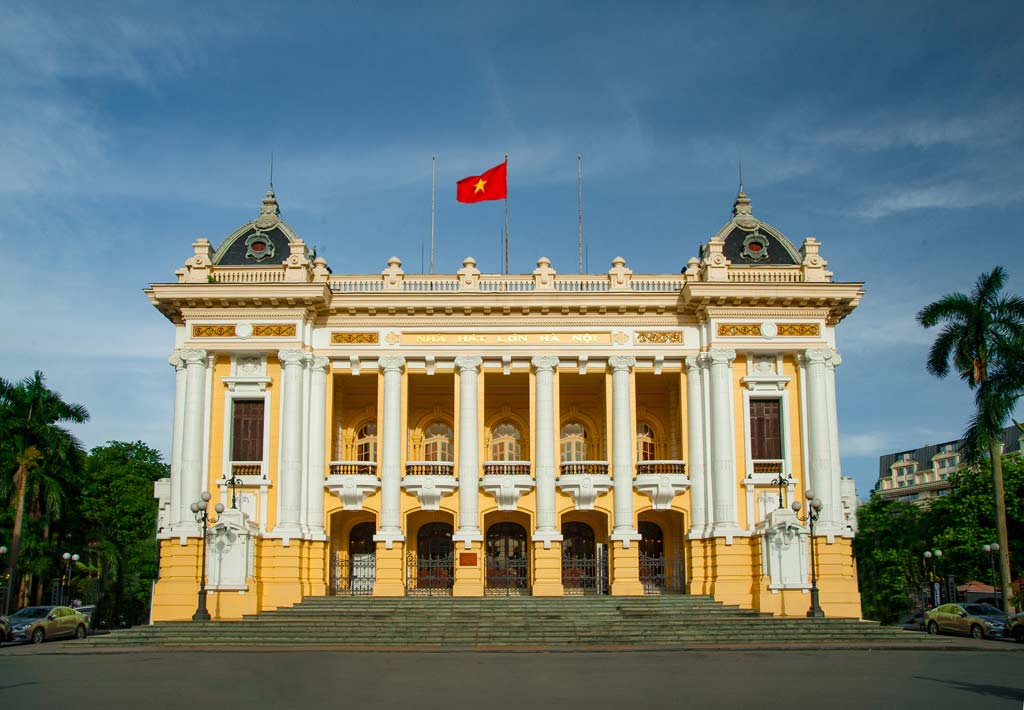
Hanoi, the capital where “Vietnamese” life blends with the colonial past.
The scooter is king in the heart of a maze of alleys with multiple small stands, small stalls of all kinds, and street food stalls. The congestion of the sidewalks is real! Clothing sellers, small coffee tables and stools for eating, children playing, craftsmen, etc.
The pedicabs make their way with difficulty by slaloming through the streets of the old quarters, which are specialized by trade. The colonial district, with its beautiful yellow buildings bordering wide avenues, recalls the colonial history of Hanoi.
The pretty Hoan Kiem Lake in the center is the lungs of Hanoi and the meeting place to stroll in the shade of tall trees, shop in the luxury boutiques, or indulge in Tai Chi while mingling with the crowd of Hanoians early in the morning.
Ha Long Bay
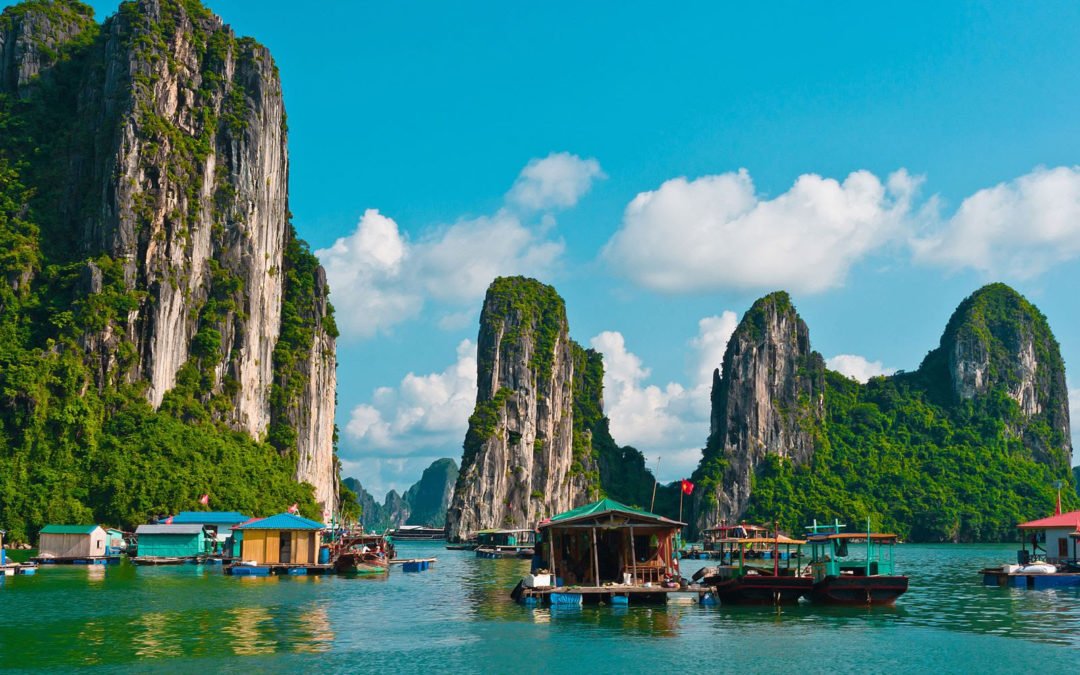
Ha Long Bay – Emblematic and legendary, is a sublime gift of nature whose worldwide fame is second to none. It became a UNESCO World Heritage Site in 1994 because of its exceptional landscapes.
A jade-colored water from which emerges thousands of picturesque limestone rocks, in an extraordinary universe.
A charming cruise, private or collective, sleeping under the stars, in peace, in a beautiful traditional-style junk, is an unforgettable memory.
Hue
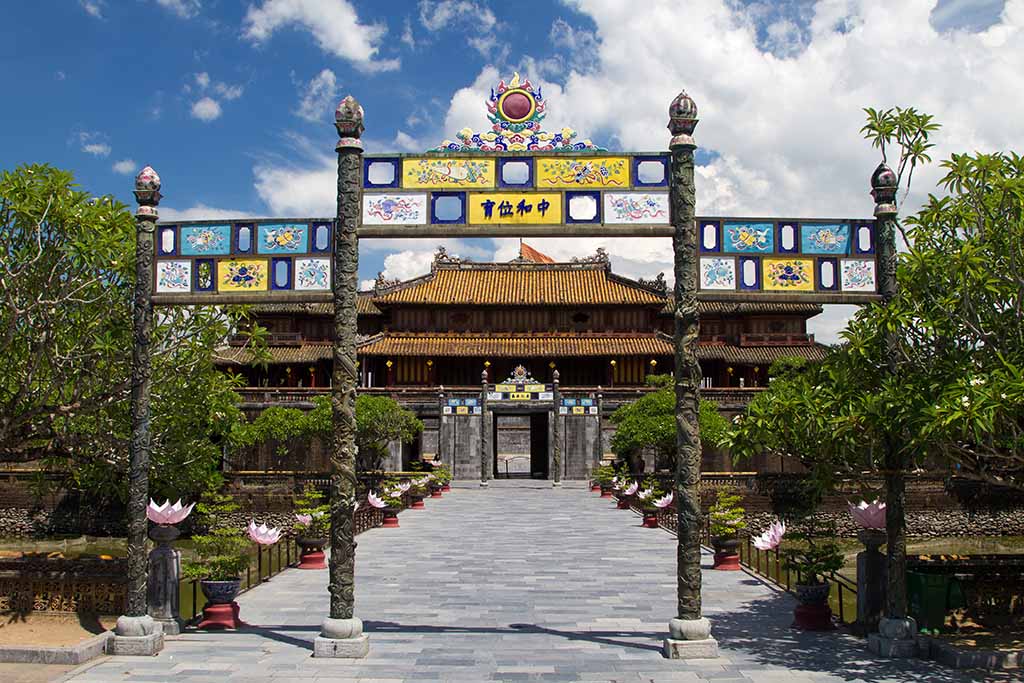
Former capital of Vietnam – Hue is a page in the imperial history of the Nguyen dynasty. The magnificent heritage of the imperial city has earned Hue to be classified as a UNESCO cultural heritage site. Royal palaces, mausoleums, ancestral pagodas, poetic landscaped gardens, harmonious pools, are the reflection of imperial splendor.
The typical Hue boat, the “Dragon boat” on the Perfume River completes this pretty picture in an atmosphere in memory of Imperial Vietnam.
Hoi An – Coastline in the center
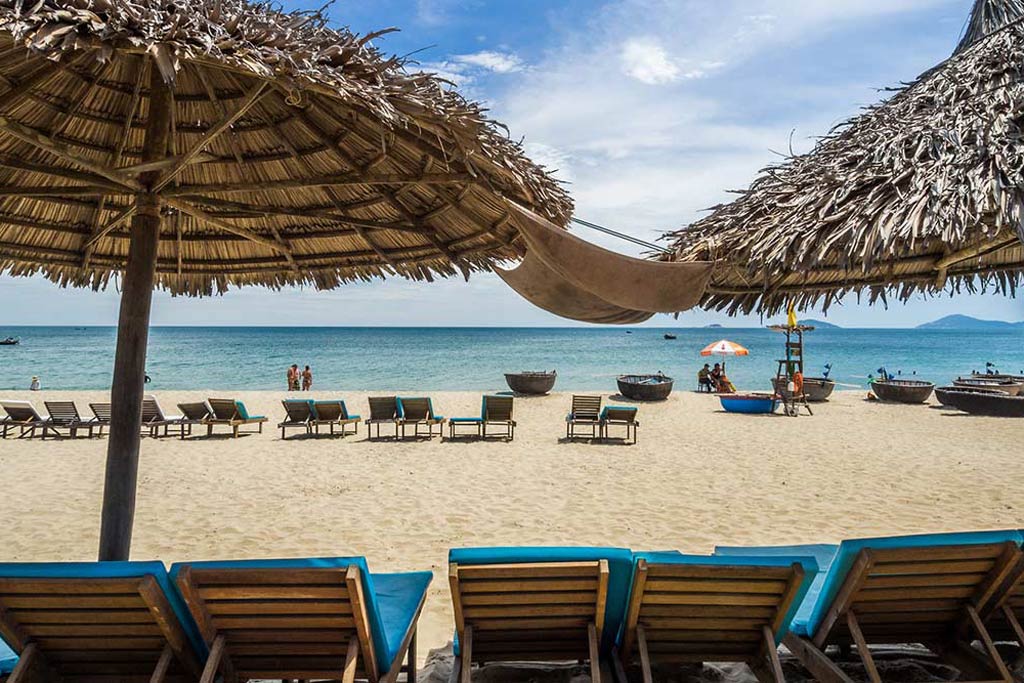
Hoi An, coastline in the center, a city of art, historic, colonial, seaside, and full of charm. A former trading post in the China Sea, Hoi An is listed as a UNESCO World Heritage Site.
Its historic center is home to old mansions restored from the time when Hoi An was a prosperous port, a delightful Japanese bridge, temples of Chinese congregations, alleys with colonial houses, low and yellow in color, artists’ studios.
The archaeological site of My Son, ancient kingdom of Champa still completes Hoi An historically.
Under the last rays of the setting sun, the port of Hoi An and all the streets are tinged with the soft light of the hundreds of small lanterns which light up at nightfall and which are the emblem of Hoi An.
A pretty seaside stopover, Hoi An boasts beautiful beaches with glittering sand and deliciously clear water.
Paddling in a kayak, pedaling in the countryside in the middle of peaceful rice fields, lazing on the beautiful golden beaches, this is all the charm of Hoi An and its relaxed lifestyle.
Sapa – Northern mountains
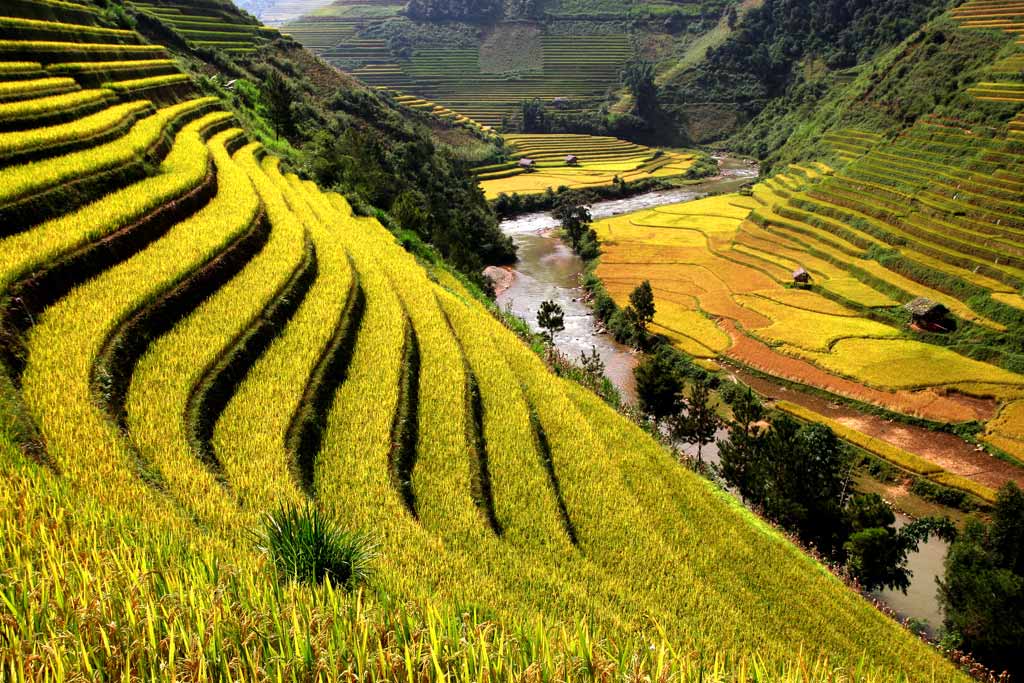
Sapa, in the northern mountains, is the wonder of the sumptuous landscapes of rice terraces worked by the hand of man.
In ethnic land, the H’mong, the lolo, etc invite us to discover their daily life between remote minority villages and colorful markets.
Mai Chau

Mai Chau is in the Northwest region of Vietnam.
Rugs of rice fields in pretty checkerboard patterns at the foot of the Tonkinese cordillera where small authentic villages nestle.
The White Thai ethnic group lives in thatched-roof stilt dwellings and is mainly busy working in the rice fields. They make Ruou Can, a local alcohol made from rice.
Pedaling or hiking in this serene environment is a real pleasure and gives the opportunity to meet the inhabitants.
Pu Luong Nature Reserve
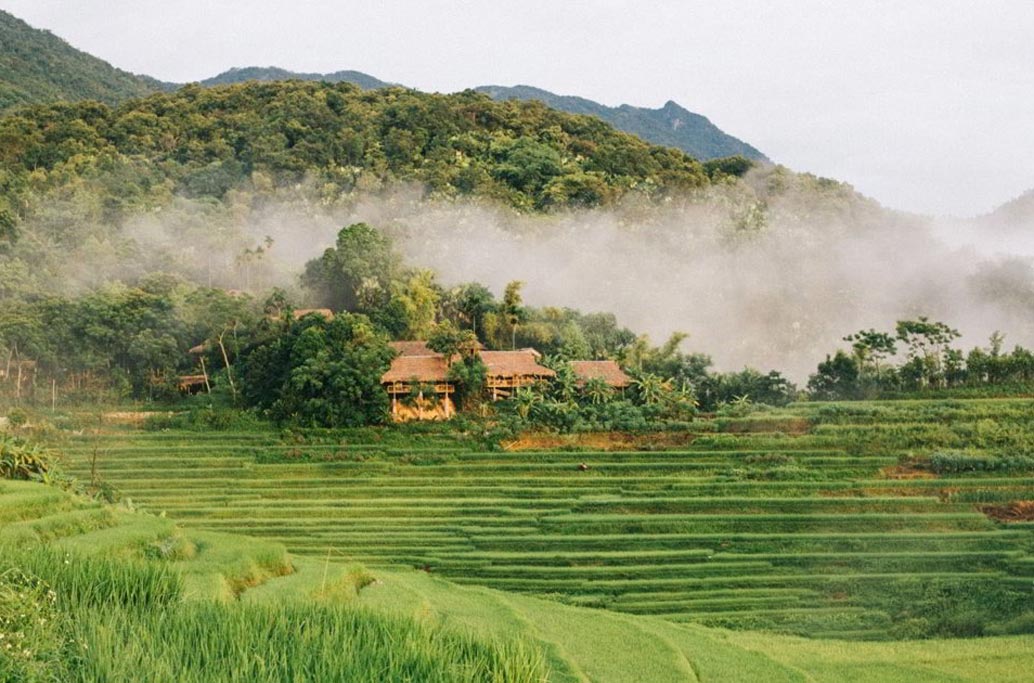
Pu Luong Nature Reserve is in a valley in Thanh Hoa province, about 180 km from Hanoi.
The rice fields and forests surrounding Pu Luong, including lowland forests, mountain forests, and many bamboo clumps.
Many species of animals including the Delacour Langur – an endangered species of monkey. There are 30 animals. It is also said that PuLuong is a “granary” of medicinal plants. There are 1,100 species of vascular plants, four of which are listed in the World’s Red Book.
Pu Luong is populated by the Thai ethnic group who live in houses on stilts with thatched or palm leaf roofs. The daily life of the Thai is largely different from modern times.
Ninh Binh
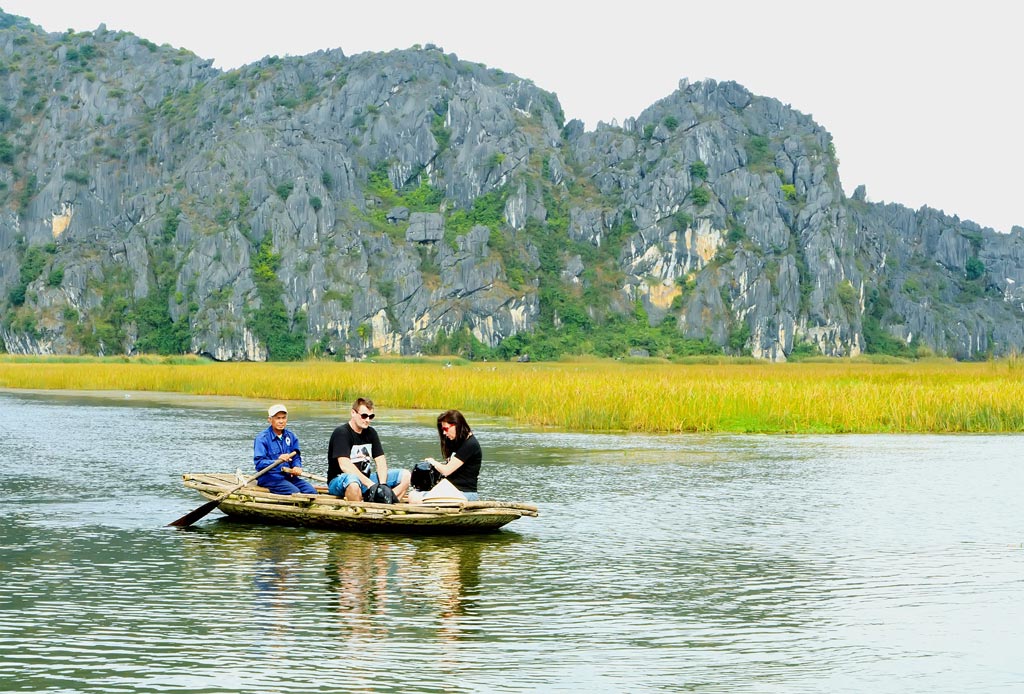
Ninh Binh, located southeast of Hanoi.
The silent and gentle river serenely flows through a vast expanse of green rice paddies and rocky peaks resembling sugar loaves, in absolute calm. A typical boat ride through this majestic nature is a delight at every moment, amidst small birds and glimpses of forgotten pagodas.
Ha Giang
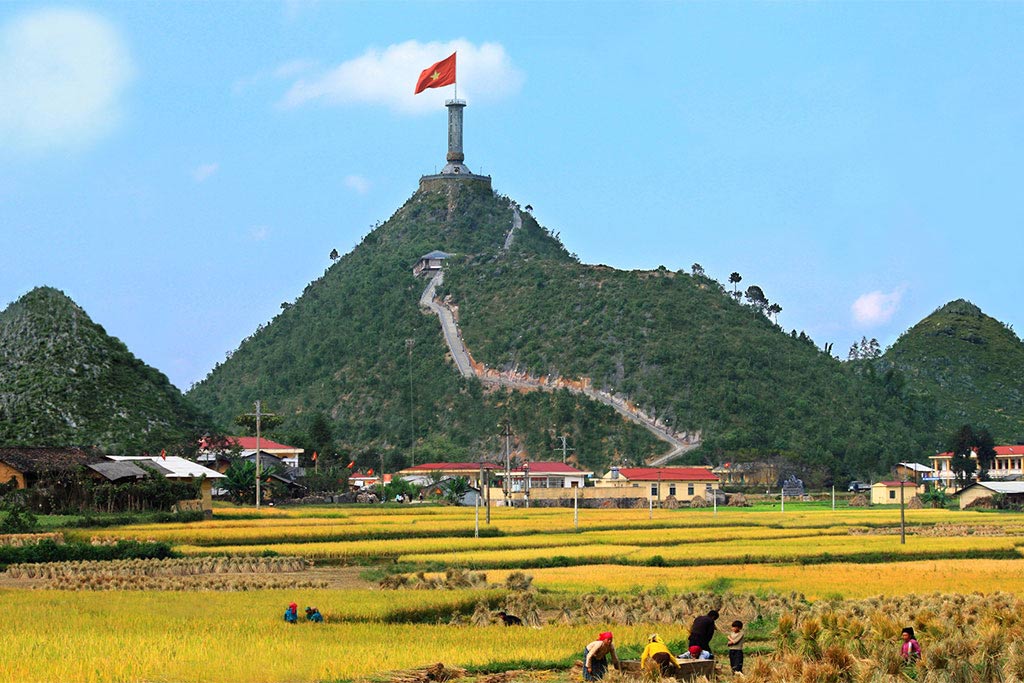
At the border of Yunnan (China), Ha Giang is a region nestled in magnificent mountain landscapes, forests, and rice terraces.
At the northernmost point of Vietnam, live the ethnic minorities Tay, Nung, Dzao, Han, and Lolo, completely preserved from the modern world. Unforgettable encounters on colorful small markets with different ethnic groups in their embroidered and colorful costumes.
In the heart of an authentic Vietnam, and against a backdrop of mountains striped with rice paddies, houses on stilts with thatched roofs gathered in small hamlets. Here, ancestral traditions remain unchanged.
The horse fighting festival in mid-August is highly regarded and attracts many tourists for thrilling horse fights with a first prize awarded to the triumphant horse.
The Long Tong festival, unique to the Tay ethnic group, is held every January of the lunar calendar, to pray for a prosperous and happy year.
The Buckwheat Flower Festival (in Vietnamese “Tam Giac Mach”): In October, the white and pink buckwheat flowers invade nature. This magnificent sight is celebrated with a festival to the sound of local musical instruments such as the “khen” or flute.
Mu Cang Chai

For fans of rice paddies and dreamy photography, this is where you will see the most beautiful rice paddies in the country. A world of rice paddies surrounded, of incomparable beauty!
The rice paddies of Mu Cang Chai are classified as a national heritage of Vietnam.
From May to October, the tender green turns to golden blond, on undulating hillsides carved with rice paddies by the hands of humans.
Phong Nha
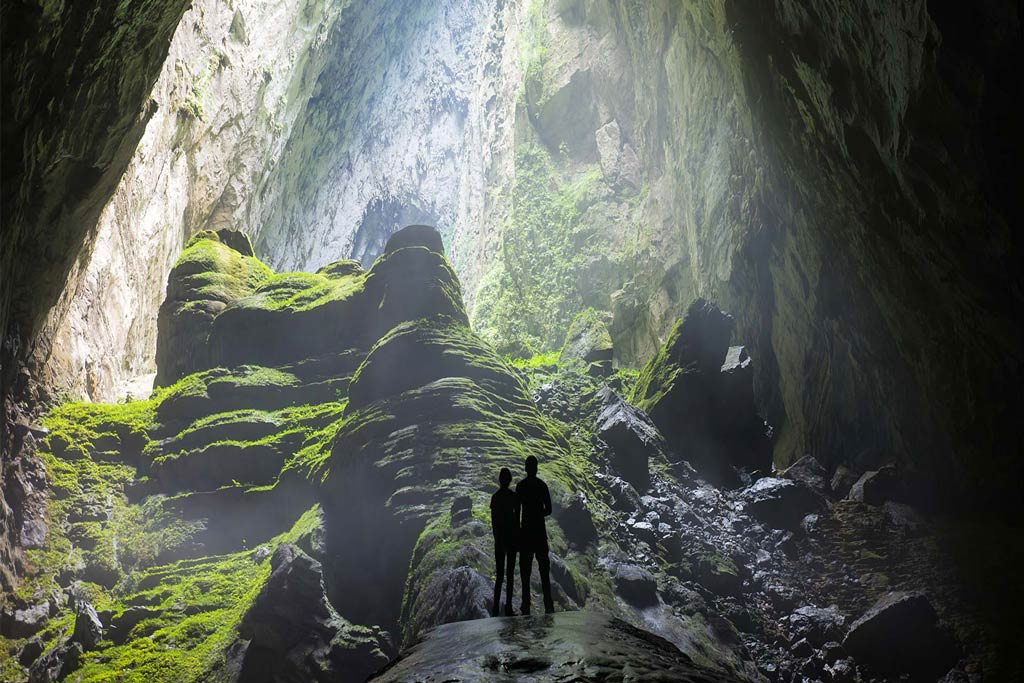
Phong Nha, located in central Vietnam before Hue, is a complex of rock formations, caves, and caverns that has been designated a UNESCO World Heritage Site since 2003.
You can explore by boat, swimming, and trekking.
Phong Nha – Ke Bang National Park takes its name from the magnificent Phong Nha cave, which reveals spectacular rock formations, caves, and underground rivers, and from the Ke Bang forest whose protected fauna and flora are rich and varied.
The central highlands
Buon Me Thuot, the capital of Dak Lak province, is the largest city of the Central Highlands. Many ethnic minorities inhabit the area such as the Mnong, Ede, and Jorai.
Although this region is not very touristy, it is worth a visit. It is mostly known for being the main coffee producer in Vietnam.
In Lac Lake, a natural lake fed by the surrounding mountains, the Mnong minority lives and offers boat rides and elephant-back adventures.
The traditional music in local costumes with the sound of gongs is an artistic expression recognized by UNESCO in 2005 as a masterpiece of the oral and intangible heritage of humanity.
Traditional houses with surprising architecture called “Rong” and topped with an immense, pointed thatched roof are characteristic of this region.
The mekong delta to the south

The Mekong Delta in the south, only a 1-hour drive from the bustling city of Ho Chi Minh. The Mekong River is the king of Indochina, it flows through Laos, Cambodia, and Myanmar.
The floating markets of the Mekong immerse you in the lively world of river commerce. The huge barges overloaded with fruits and vegetables trade daily and tirelessly navigate the river.
Discover the arroyos on a small sampan, which crisscross the delta and offer a peaceful haven in lush nature. Glide through canals that reveal the abundance of the land with abundant fruit gardens in a green world.
Take a romantic overnight cruise for two or go with family or friends on beautiful teak wood boats with about a dozen cabins. You can discover the activity of the Mekong and the populations living along the river.
And for an exceptional private moment, enjoy the ultimate Mekong experience with your partner, family, or friends on a private sampan – a true floating luxury hotel with a bamboo roof. The magic of luxury with a unique charm!
Ho Chi Minh City
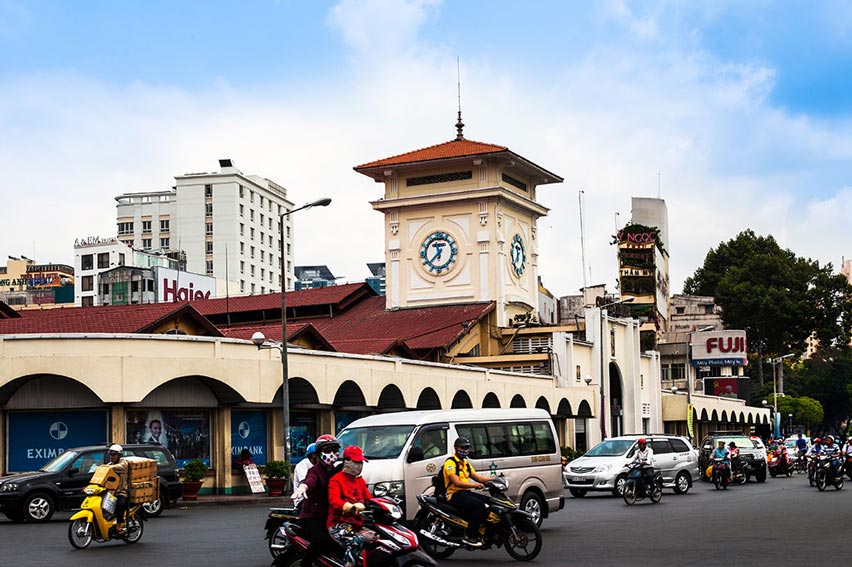
In the south, Ho Chi Minh City is a bustling and vibrant metropolis. Its buildings proudly display striking modernity, its crowded markets, trendy bars, everything contributes to making this economic capital a modern city.
A few kilometers from Ho Chi Minh City, the Cu Chi tunnel network is a striking historical site from the Vietnam War period. A real underground city composed of networks of over 250 km of tunnels where the Viet Cong waged its resistance war against American troops.
Cao Dai Temple in Tay Ninh is also a few kilometers from Ho Chi Minh. Tay Ninh is the headquarters of the Caodaism religion, a mixture of Buddhism, Confucianism, Taoism, Vietnamese spiritualism, Christianity, and the worship of “genies.”
To the south of Ho Chi Minh City, the beautiful beaches of Vung Tau are the weekend retreat for Saigonese.
Phu Quoc Island

In the southernmost part of Vietnam, off the coast of Cambodia, facing the Gulf of Thailand, and a 1-hour flight from Ho Chi Minh, Phu Quoc is the trendy beach destination.
Here, blond sand and coconut trees inspire relaxation!
Other more discreet beaches also offer worthy scenery to discover by motorcycle for a day trip around the island.
The small day market is lively and colorful, and the evening market is a real treat! Small food stalls offer fresh fish, seafood, and shellfish that will be served to you on the spot! Other shops will tempt you with white or black pearls from the pearl farm.
“Nuoc mam” is the great specialty of Phu Quoc and the main condiment of Vietnamese cuisine. Many small artisanal manufacturing companies open their doors for guided tours.
And to end your days, squid fishing under the light of lanterns serving as bait is one of the nocturnal distractions of Phu Quoc.
Con Dao
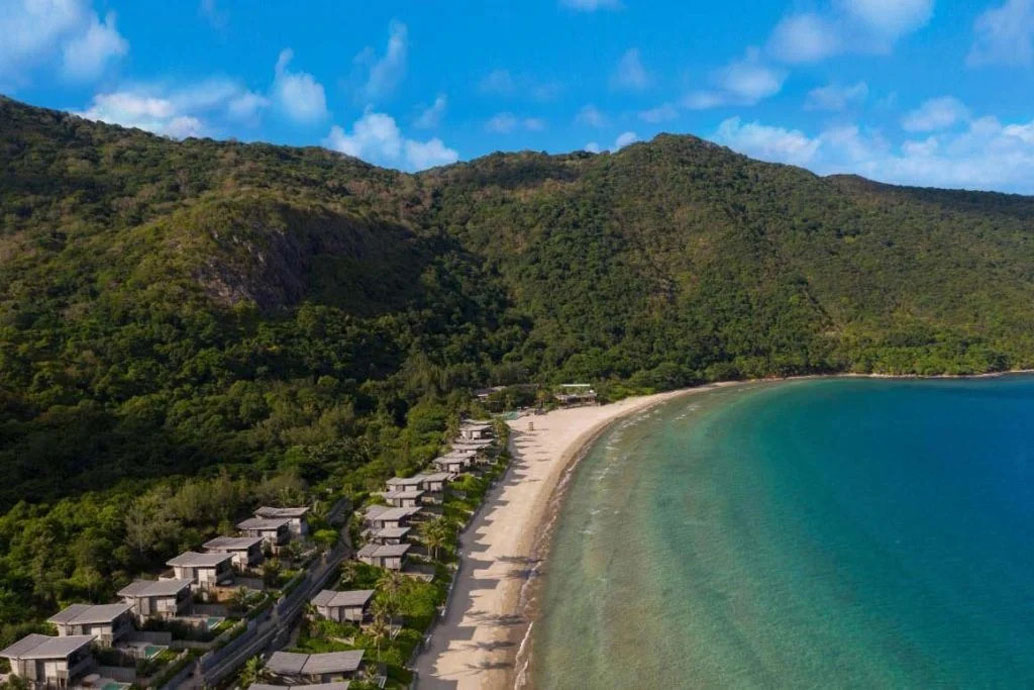
Only 1 hour by plane from Ho Chi Minh, an archipelago of 16 islands forms the Con Dao archipelago. Con Son Island is the largest of the islands and the only inhabited one, Con Dao being the main town.
A little paradise at the end of the world!
Con Dao was classified as a national park in 1993 for the beauty of its wild nature, the richness of its ecosystem, the beauty of its seabed, the importance of coral reefs, and the extent of its primary forest.
Nha Trang
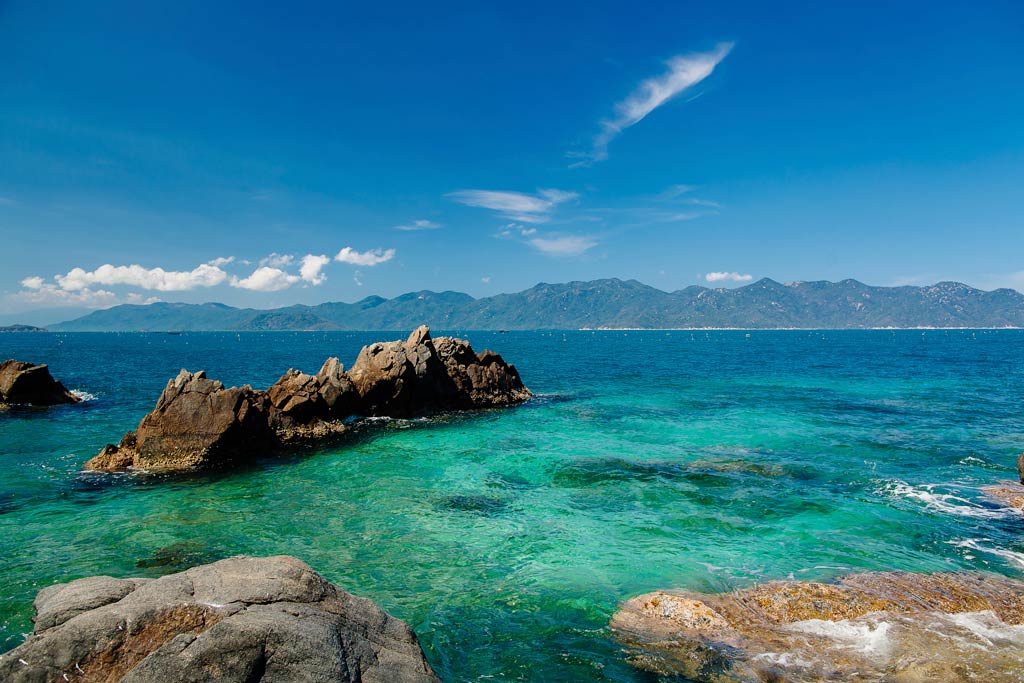
Nha Trang is a beach resort between Hoi An and Ho Chi Minh City, beloved by beachgoers.
A beautiful golden sand beach where swaying coconut trees stretch for kilometers and clear waters create a picture-perfect landscape. Daily shuttle boats explore secret and isolated bays such as Whale Island, Bamboo Island, Ebony Island, Monkey Island, and Swallow’s Nest Island.
Discovering the underwater world is one of the great pleasures in Nha Trang. You will enjoy the many seafood restaurants lining the beach and overflowing with tanks of fresh seafood for your indulgence.
| Top 10 beach stays in Vietnam 2024 - 2025 |
In the extreme south of Vietnam, off the coast of Cambodia, facing the Gulf of Thailand, and 1 hour flight from Ho Chi Minh, Phu Quoc is the seaside destination in vogue.
Only 1 hour by plane from Ho Chi Minh, an archipelago of 16 islands form the Con Dao archipelago. Con Son Island is the largest of the islands and the only inhabited one, Con Dao being the main town.
Former French colonial city, 2 hours by car from Ho Chi Minh or 1 hour by hydrofoil express ferry, Vung Tau is the seaside resort of Le Saigonnais, as well as golfers who benefit from the largest course in Vietnam and the best maintained!
4 hours by car from Saigon, Muine is the seaside resort for the inhabitants of Saigon. The return of the fishermen delivers a spectacle not to be missed!
Nha Trang is a seaside resort between Hoi An and Saigon adored by beach lovers. A beautiful golden sand where coconut palms sway for miles and clear waters make it a postcard landscape.
A charming seaside stopover, Hoi An boasts beautiful beaches with glittering sand and deliciously clear water. Paddling in a kayak, pedaling in the countryside in the middle of peaceful rice fields, lazing on the beautiful golden beaches, this is ALL the charm of Hoi An and its relaxed lifestyle. |
Dream about your trip to Asia, in private
We are here to make it happen with youFREE QUOTE, WITHOUT OBLIGATION









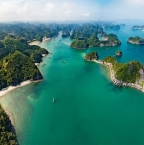

-(1).jpg)